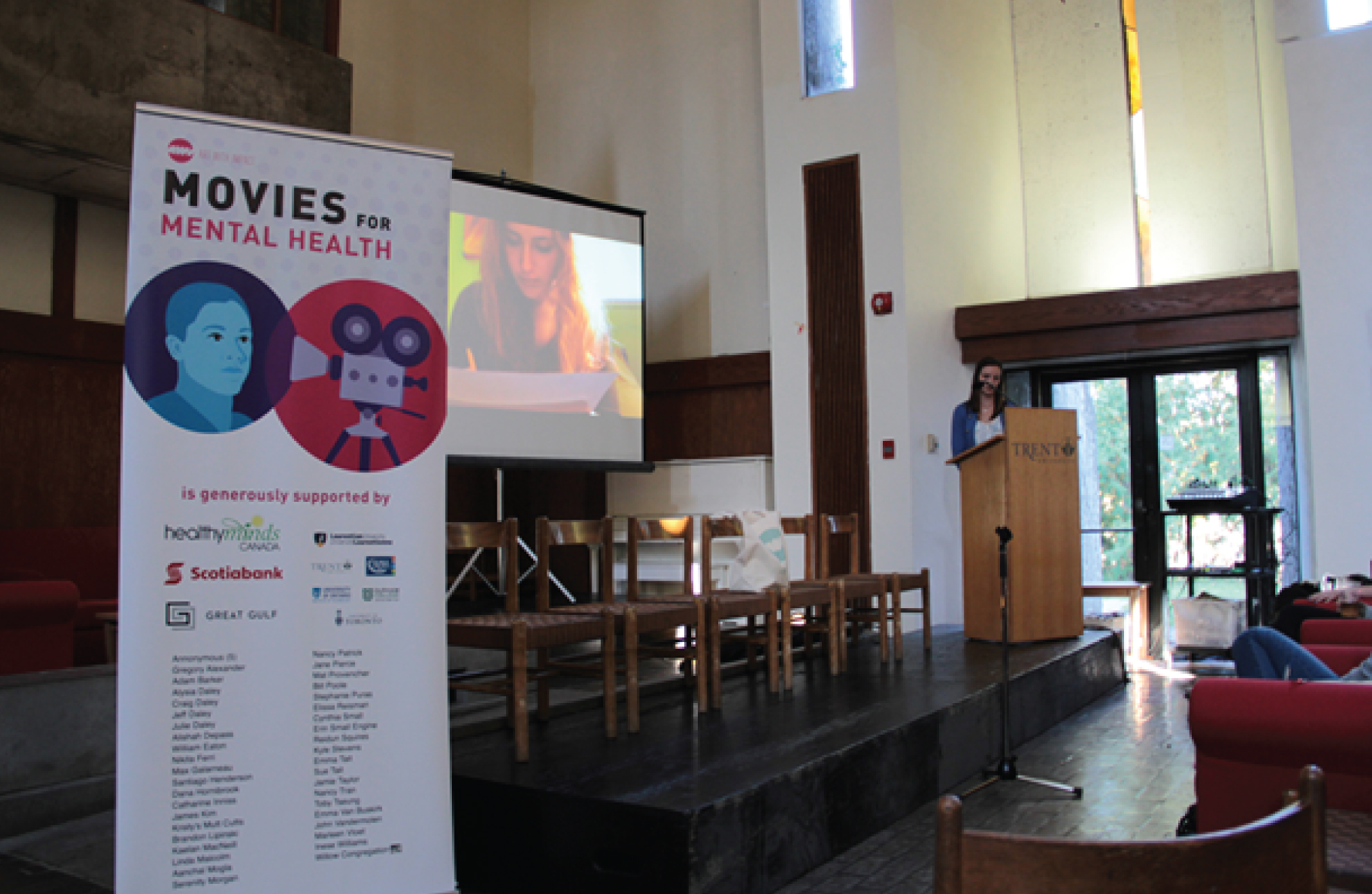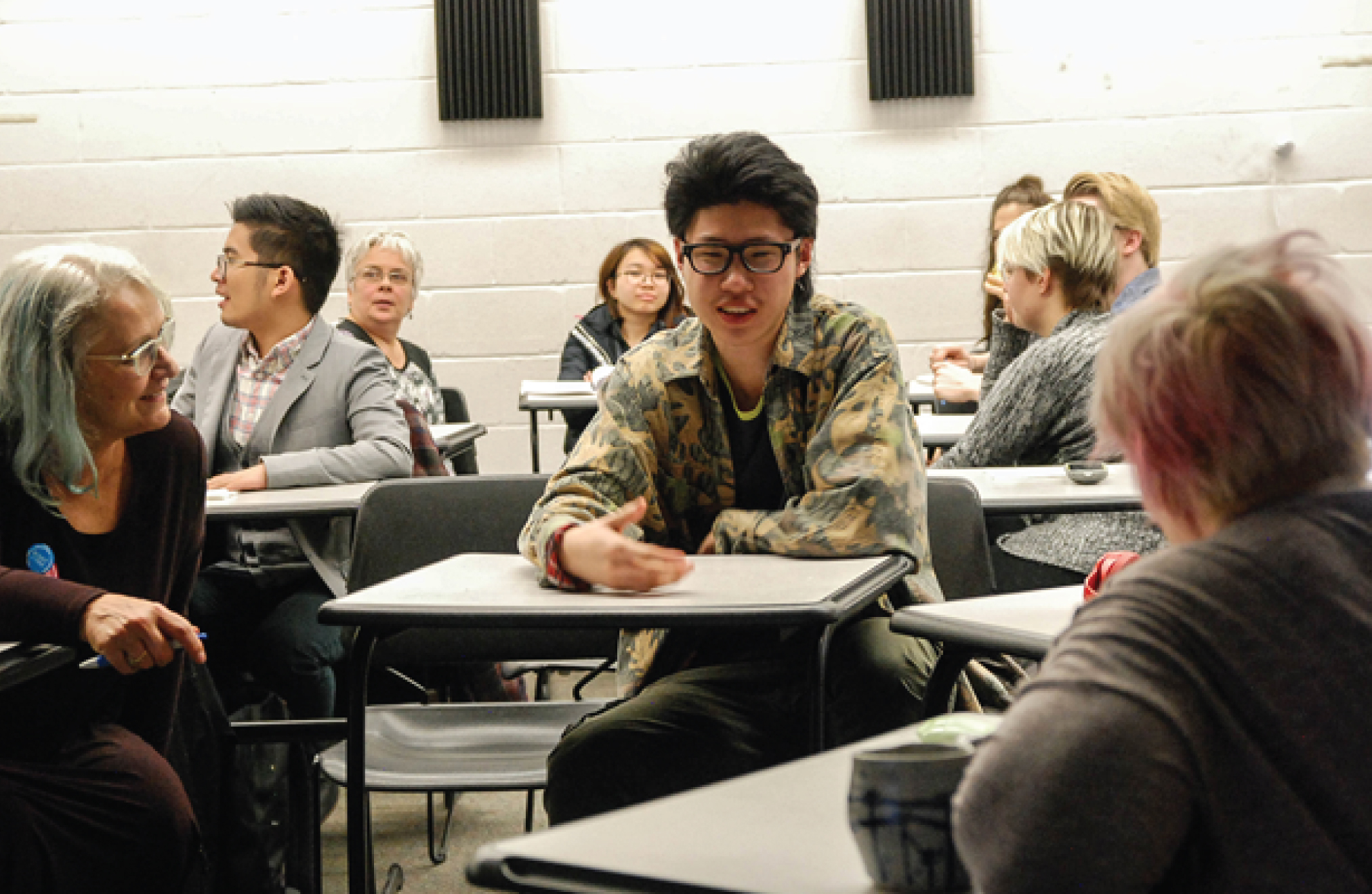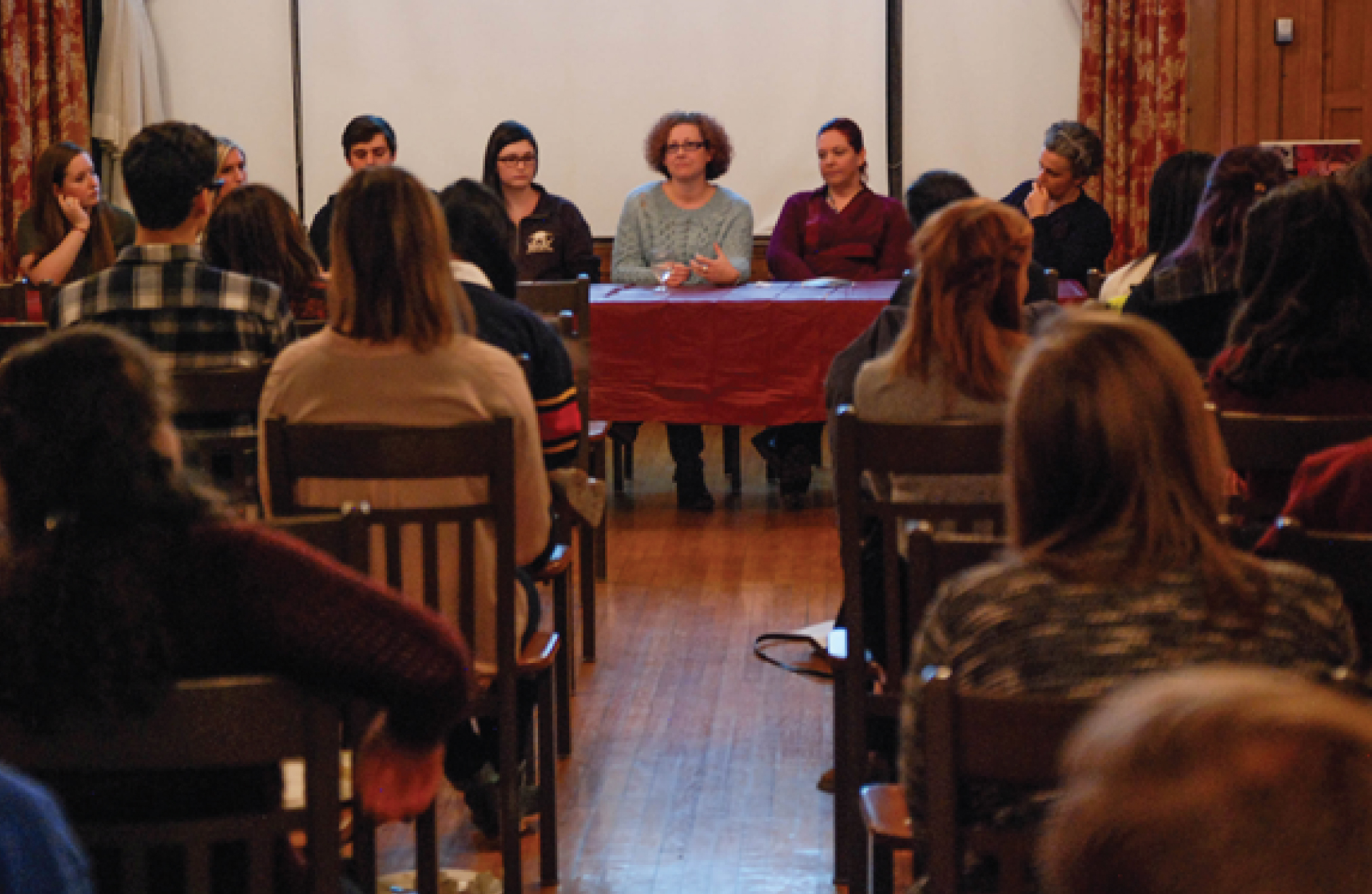Charity Spotlight: This post was provided by Natalie Daley, Director of Art With Impact, as part of our ongoing charity spotlight series.

When I was in my first year of university I was homesick, lonely and frequently depressed, yet convinced that everyone else around me was transitioning with ease. While most people in residence seemed to be enjoying the numerous social outings, I would sit anxiously in my room wondering how I was going to be able to get out of my comfort zone and meet anyone. On top of that, I ended up switching my majors three separate times, convinced I wasn’t going to find anything I was passionate about. Eventually, I took the step to seek counselling on my school’s campus to deal with all of the elements overwhelming me and to combat the isolation I felt. Through counselling I had an extremely positive experience developing helpful coping mechanisms, establishing self-care routines, and gaining resiliency and faith in myself. And while I now realize that I wasn’t alone in my struggles, at the time, no one else was talking about theirs.
The fact of the matter is, the majority of college-aged students will hesitate to reach out for help due to the fear of being stigmatized, judged, misunderstood, or having a compassionate ear there for them when they do decide to open up. When this fear is internalized, it causes students to feel as though they are weak and that they have a responsibility to work through their struggles alone, and many don’t believe it’s even possible to feel better. In Canada, the majority of mental illnesses and/or substance use disorders present symptomatically between the ages of 15-24, impacting 10 to 20 percent of Canadian youth. And each year over 700 young Canadians die by suicide, it’s the number one leading cause of non-accidental death among youth. This is concerning and heartbreaking, and this is exactly why Art With Impact’s work in the realm of youth mental health and early intervention is critical.

Taking The First Step
When I would tell people that I was visiting a counsellor weekly in university there was always an awkward moment when they would glance at me with concern and they would say something like “Oh…what’s wrong with you?” At the time, of course, I didn’t have the language to say “nothing is wrong with wanting to check in on yourself and stay mentally well,” but, that’s a message that I get to consistently deliver to young adults through my work with Art With Impact (AWI).
Two years ago, AWI’s Executive Director and I began the process of adapting AWI’s programming from California, to the specific needs and concerns of Canadian post-secondary students. We experienced a lot of trial and adaptation, but from one year to the next, we had such a demand for our innovative programs that we went from visiting one campus in our first year to reaching fifteen campuses in three separate provinces in our second. It has taken a lot of work but it has been made possible because of how deeply our staff and the students we interact with believe in the philosophy of our organization. So what is that philosophy, exactly? Well, we believe that art is the strongest and most powerful way to reach humans’ emotions.
Using Art for Discussion, Reflection, and Awareness
As part of our charitable work, Art With Impact collects short films about mental health through an ongoing monthly competition, and awards emerging artists with cash prizes. We then use these groundbreaking films as catalysts for discussion with post-secondary students and emerging adults. The ability of our films have to generate meaningful conversation and exploration around issues related to mental health is outstanding, not to mention their power to move people to action and seek help.

After personally facilitating workshops throughout the country, I’ve seen firsthand how our 26 winning films educate college and university students about the complexities and spectrum of mental health challenges, breaking down stigmas, and validating young people’s own experiences along the way. At each Movies for Mental Health event, we define terms related to mental health, show and discuss thoughts and feelings around three short films from our diverse library, and assemble a panel of campus and community resources for students to learn about and connect with.

As someone who has struggled with my mental health at various periods of my life, it has been hopeful and heartwarming to feel a room fill with empathy and understanding around these challenges. Challenges that we allface, and that none of us are exempt from, regardless of race, class, geography, or gender.
Art With Impact Canada 2016 from Art With Impact on Vimeo.
The Value of Connection
The work we do at Art With Impact also demonstrates the incredible impact of networks and connections, especially because mental health is intensely personal and inherently local. Each member of our team has connections with all the professors, counsellors and administrators at the schools where we work, the partners who make the work possible, and most importantly, the individual students who at every single workshop share themselves and their amazing visions for the future. We’ve heard from over 700 Canadian students this year alone that our events are heart-warming, enlightening, eye-opening and welcoming. Best of all, 68 percent of the students we spoke to this year indicated an increased likelihood to seek support for their well-being as a result of our workshop. For us, that’s everything. And for my 18-year old self, it’s an enormous sigh of relief.
At Art With Impact, we’re just getting started and we can’t wait to continue speaking to more students, visit more campuses in new regions, and interact with others who share a vision of communicating freely and fearlessly about our mental health—so stand up with us!
To learn more about Art With Impact, or to make a donation, please visit their Charity Profile
Page >>